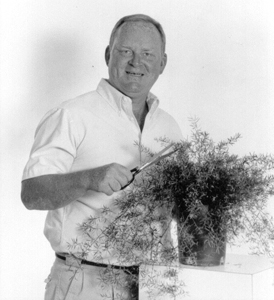CONTROLLING BAGWORM
 If you have seen “organic” looking bags hanging on your trees and shrubs, or even in your grass, they are most likely bagworm. During the fall season those bags are filled with hundreds of eggs that winter over and hatch in the spring, usually around late May and early June. The fact that they are filled with eggs in the fall is the reason that spraying now is not the best time. Spraying during the spring, after they hatch will give you the best results. For now, simply hand-pick the bags and destroy them, either by burying them or burning them.
If you have seen “organic” looking bags hanging on your trees and shrubs, or even in your grass, they are most likely bagworm. During the fall season those bags are filled with hundreds of eggs that winter over and hatch in the spring, usually around late May and early June. The fact that they are filled with eggs in the fall is the reason that spraying now is not the best time. Spraying during the spring, after they hatch will give you the best results. For now, simply hand-pick the bags and destroy them, either by burying them or burning them.
In the spring, the eggs of the bagworm hatch and the males crawl out and fly. The female of the species cannot fly but do get around by means of “ballooning”, traveling with the wind. They attach themselves to trees and shrubs with a silk fiber then start making their “bag” out of whatever kind of debris that is around them. The female then stays in the bag and emits a sex attractant pheromone to attract the males for re-production. After she lays hundreds of eggs within the bag, the female crawls out of the bottom of the bag and falls to ground and dies.
During the time, after hatching and the building of the new bags, is when most all of the damage occurs to your plants. This would be all of June and July and would be the very best time to spray. As always, spraying before you see the problem is best. If you had bagworm last year on your plants, then you better figure on spraying next summer. Recommended sprays are: Bt, known as Dipel (bacillus thuringicnsis), Orthene, Seven (sometimes sold as Eight), Diazinon, Dursban, Cygon, nicotine sulfate, pyrethrum or Rotenone.
So in review, hand pick and destroy the bags during late fall, winter or even early spring before the eggs start to hatch. Spray with any of the recommended sprays during June and/or July. Bagworm can be found on evergreens and conifers, including pines, spruce, junipers, arborvitae and red cedar. Also keep an eye out for them on deciduous trees such as maple, oak, sycamore, apple and hawthorn.
- SURPRISE LILIES - August 12, 2016
- PRUNING PERENNIALS IN JULY - July 29, 2016
- WHOOPS — EASY FIX - July 15, 2016

